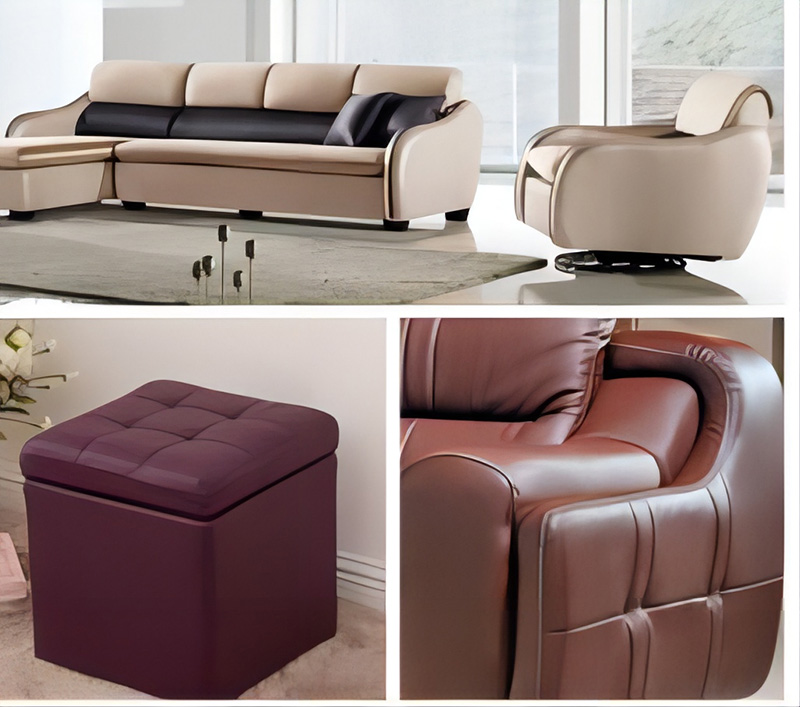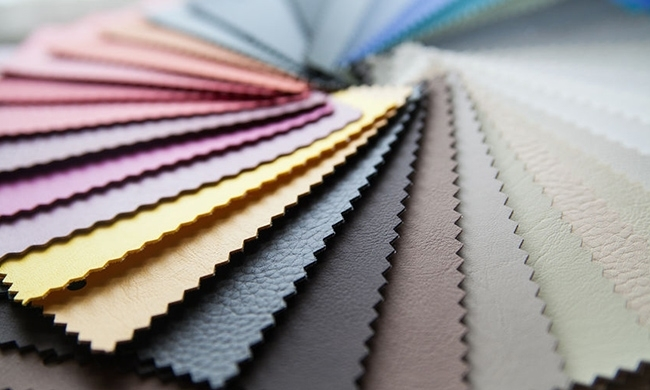When buying fabric, one of the first questions many people ask is, “What does a yard of fabric look like?” Whether you’re a beginner crafter or a seasoned professional, understanding fabric measurements is essential to choosing the right materials for your projects. In this article, we’ll break down exactly what a yard of fabric is, how to visualize it, and how it impacts the projects you’re working on. By the end, you’ll have a clear grasp of how to measure fabric and use it efficiently for any crafting or sewing task.
1. Introduction to Fabric Yardage
When you walk into a fabric store or shop online, the most common unit of measurement you’ll encounter for fabric is the yard. A yard is a standard measurement used in the textile industry, equivalent to 36 inches in length. But here’s the kicker: while it’s easy to talk about yards, understanding how much fabric this truly represents can be tricky, especially if you’ve never worked with fabric before. This section will help you visualize a yard of fabric, so you’ll know what to expect when you make your next purchase.
First off, you need to know that the width of fabric varies, but the length is usually consistent. A yard of fabric is always 36 inches long, but the width can range from as little as 44 inches to over 60 inches depending on the type of fabric you’re purchasing. This variation in width can significantly affect how much material you can use for your project.
Ready for the good part? In this section, we’ll show you how a yard of fabric compares to everyday objects, helping you visualize how much material you’re really working with. Think about it like this: if you’ve ever measured out a yard of fabric for a project, you know it’s not just about the length—it’s also about the fabric’s width and texture. By using everyday objects to compare, you can easily see how fabric behaves in real-world applications.
Table 1: Standard Fabric Measurements
| Measurement | Inches | Centimeters |
|---|---|---|
| 1 Yard | 36 | 91.44 |
| Fabric Width | Varies | Varies |
2. Visualizing a Yard of Fabric
Here’s where it gets interesting. To truly understand what a yard of fabric looks like, you need more than just a number. You need to visualize it in relation to things you see every day. For instance, imagine a yard of fabric laid out flat. It’s about the length of a standard dining table, so if you’re picturing it folded up or rolled, think of it as the length of a large scarf.
But there’s more! To put it in perspective, one yard of fabric is roughly the length of a medium-sized bedspread or a large bath towel. However, this measurement doesn’t tell you much about the width of the fabric. Depending on the type of fabric, the width can be as wide as a twin-sized bed or as narrow as a large pillowcase.
What’s the real story here? The key takeaway is that the width of the fabric can drastically affect how much you can use for any given project. Fabric that is wider gives you more flexibility, especially for large-scale projects like upholstery or draperies. On the other hand, narrower fabrics are typically used for smaller crafts and projects, like bags, scarves, or quilts.
Table 2: Comparing Fabric Yardage to Everyday Objects
| Object | Approximate Length |
|---|---|
| Dining Table | 36 inches (1 yard) |
| Bedspread | 36 inches (1 yard) |
| Bath Towel | 36 inches (1 yard) |
3. Types of Fabric and Their Widths
Not all fabrics are created equal, and their widths can vary quite a bit. So, what does this mean for you when you’re trying to understand fabric yardage? It means that fabric width affects the overall usable area of the fabric.
For example, cotton fabric typically comes in widths of 44 to 45 inches, while more luxurious fabrics like silk or upholstery materials often come in widths of 54 inches or more. But here’s the kicker: if you’re working on a project that requires a specific fabric width, make sure you’re aware of it before making your purchase. Some patterns or sewing projects need fabric with a certain width to ensure the proper fit or aesthetic.
So, why should you care? The width of fabric plays a huge role in how much material you’ll need for your project. For instance, a standard 44-inch width may require more yardage for a project than a 60-inch width, simply because you need to account for how much fabric is available in the width direction.
Table 3: Common Fabric Widths
| Fabric Type | Common Width Range |
|---|---|
| Cotton | 44-45 inches |
| Silk | 54-60 inches |
| Polyester | 44-54 inches |
| Upholstery | 54-60 inches |
4. How to Measure Fabric at Home
Ready for the good part? Let’s talk about how to measure fabric at home. Measuring fabric accurately is one of the most important skills you can learn if you’re sewing or crafting regularly. Thankfully, the process is straightforward if you have the right tools.
To start, you’ll need a measuring tape or ruler. Simply stretch the measuring tape along the fabric’s edge to measure its length. A yard of fabric will always be 36 inches long, but what about the width? Depending on the fabric type, you may need to measure the width as well. This is especially important for projects that require precise cuts or specific dimensions.
Here’s a pro tip: always measure the fabric twice to ensure accuracy. A slight mistake in measuring fabric length or width could result in insufficient material for your project. Whether you’re buying fabric for curtains, upholstery, or a clothing item, accurate measurements ensure the best possible result.
Table 4: Fabric Measurement Guide
| Measurement Tool | Recommended Use |
|---|---|
| Measuring Tape | For measuring fabric length |
| Ruler | For measuring fabric width |
5. Fabric Yardage in Different Projects
Now that you know how to measure fabric, let’s dive into how much yardage is needed for different projects. This is where understanding fabric yardage truly becomes crucial. Whether you’re sewing a dress or making a pair of curtains, knowing how much fabric you need ensures the project goes smoothly.
For example, making a basic dress might only require about 1.5 to 2 yards of fabric, depending on your size and the design of the dress. On the other hand, a full-length gown may require 5 yards or more. Similarly, for home décor projects like curtains, the amount of fabric needed can vary depending on the window size and the fabric’s width.
What’s the real story here? The key to getting the right amount of fabric lies in planning. Before you begin any project, take time to calculate your fabric needs based on the pattern or design you’re following. This will help you avoid wasting fabric or running short halfway through your project.
Table 5: Fabric Yardage for Common Projects
| Project | Average Yardage Required |
|---|---|
| Simple Dress | 1.5 – 2 yards |
| Full-Length Gown | 5 – 6 yards |
| Curtains (Single Window) | 3 – 4 yards |
| Tote Bag | 1 yard |
6. Comparing a Yard of Fabric to Other Measurements
What’s the deal with other units of measurement? We’re all familiar with inches and feet, but how does a yard of fabric translate to these other units? This is an essential question for anyone working with fabric, as fabric stores and suppliers will often list yardage in different formats.
Here’s how it works: a yard is equal to 36 inches, which is also 3 feet. But, what about meters? A yard is roughly 0.914 meters, which can be a useful conversion if you’re buying fabric from international suppliers.
Understanding these conversions helps you be more precise when purchasing fabric online or from foreign suppliers. It ensures that you’re getting exactly what you need without the confusion of varying measurement systems.
Table 6: Conversions for Fabric Yardage
| Measurement | Conversion |
|---|---|
| 1 Yard | 36 Inches |
| 1 Yard | 3 Feet |
| 1 Yard | 0.914 Meters |
7. Fabric Yardage and Cost Considerations
When purchasing fabric, one of the first factors to consider is the cost per yard. Depending on the type of fabric, the price can vary significantly. For example, a high-end fabric like silk will cost more per yard compared to a more affordable material like cotton.
What’s the kicker? Understanding fabric pricing is key to staying within your project budget. The amount of fabric you buy directly affects the overall cost of the project. Make sure to compare prices at different stores and online retailers to find the best deal.
Additionally, buying fabric in bulk can save money in the long run. If you’re working on a large project or making several items, purchasing fabric by the bolt (a roll of fabric) might be more cost-effective than buying individual yards.
Table 7: Price Comparison by Fabric Type
| Fabric Type | Price per Yard |
|---|---|
| Cotton | $4 – $8 |
| Silk | $20 – $50 |
| Polyester | $5 – $15 |
| Wool | $12 – $25 |
8. Common Fabric Yardage Mistakes and How to Avoid Them
When working with fabric, it’s easy to make mistakes—especially when calculating yardage. Many people end up buying too much or too little fabric for their projects, leading to delays or unnecessary extra costs. But here’s the kicker: avoiding these mistakes is simple if you follow a few key tips.
For example, always check the fabric width before buying. A common mistake is assuming all fabrics are the same width, which can lead to buying more yardage than necessary. Another common error is forgetting to account for shrinkage when washing fabric. To avoid this, always pre-wash fabric before cutting it for your project.
By taking the time to measure twice, plan carefully, and check the fabric width, you can avoid these common mistakes and ensure your project is a success.
Table 8: Common Fabric Yardage Mistakes
| Mistake | Solution |
|---|---|
| Incorrect Fabric Width | Always check the fabric width |
| Not Accounting for Shrinkage | Pre-wash fabric before use |
| Miscalculating Yardage | Measure twice before cutting fabric |
9. How Fabric Shrinks Over Time
Did you know that fabric can shrink? It’s a critical consideration when purchasing fabric for projects, especially for items like clothing. Fabrics like cotton are particularly prone to shrinkage after being washed, so you’ll need to account for this when calculating how much fabric you need.
Here’s what you need to know: different fabrics shrink at different rates. For example, cotton can shrink by up to 5%, while synthetic fabrics like polyester usually have little to no shrinkage. The best way to handle this is to pre-wash your fabric before cutting and sewing to ensure the final garment or item fits properly after it’s washed.
Table 9: Fabric Shrinkage Rates
| Fabric Type | Shrinkage Rate |
|---|---|
| Cotton | 3% – 5% |
| Polyester | 0% |
| Silk | 2% |
| Wool | 1% |
10. Practical Examples: What You Can Make with a Yard of Fabric
Wondering how much you can do with just a yard of fabric? The answer might surprise you. A yard of fabric is versatile enough for a range of small projects, from accessories to home décor. Here are some examples of what you can create with one yard of fabric:
- A simple tote bag
- A scarf or shawl
- A pillow cover
- A small apron or skirt
- A reusable shopping bag
The key takeaway? A yard of fabric might seem like a small amount, but it can go a long way if you’re working on smaller items or projects that don’t require a lot of fabric.
Table 10: Projects You Can Make with 1 Yard of Fabric
| Project | Yardage Needed |
|---|---|
| Tote Bag | 1 yard |
| Scarf/Shawl | 1 yard |
| Pillow Cover | 1 yard |
| Apron | 1 yard |
| Reusable Shopping Bag | 1 yard |
11. Understanding Fabric Stretch and Draping
When working with fabric, you need to consider not only the length and width but also how the fabric stretches and drapes. Some fabrics, like jersey or spandex, have a lot of stretch, while others, like cotton or linen, have little to no stretch. This stretch factor can impact your design and how the fabric behaves in your project.
What’s the real story here? Understanding how fabric stretches and drapes is crucial for creating garments that fit properly and flow beautifully. When choosing fabric for clothing or accessories, consider the type of stretch and the drape to ensure the final product looks and feels great.
Table 11: Fabric Stretch and Drape Comparison
| Fabric Type | Stretch | Drape |
|---|---|---|
| Cotton | Low | Medium |
| Spandex | High | Low |
| Silk | Low | High |
| Wool | Medium | High |
12. How to Buy the Right Amount of Fabric
One of the most common questions when buying fabric is how much you actually need. To avoid buying too little or too much, here’s the solution: calculate your yardage based on the project and pattern you’re working with. Patterns typically provide yardage requirements, which help determine how much to buy.
But here’s the kicker: it’s always a good idea to buy a little extra fabric to account for errors or design changes. Whether you’re working on a dress, curtains, or a quilt, having extra fabric on hand ensures you won’t run into trouble later on.
Table 12: Calculating Fabric Yardage for Patterns
| Project Type | Average Yardage Needed |
|---|---|
| Dress | 2 – 3 yards |
| Curtains (Single) | 3 – 4 yards |
| Quilt (Lap Size) | 4 – 5 yards |
| Throw Pillow | 1 yard |
13. The Impact of Fabric Type on Yardage Needs
Different fabric types impact how much you need for a project. For instance, heavy fabrics like denim or upholstery may require less yardage due to their weight and sturdiness, while lighter fabrics like chiffon or lace require more yardage to achieve the same coverage.
What’s the kicker here? Fabric weight plays a key role in how much material you’ll need, as heavier fabrics tend to stretch less and provide more coverage. Always factor in the weight and feel of the fabric when planning your yardage.
Table 13: Fabric Types and Their Yardage Needs
| Fabric Type | Yardage Required for 1 Project |
|---|---|
| Denim | 2 – 3 yards |
| Chiffon | 3 – 4 yards |
| Upholstery | 1.5 – 2 yards |
| Lace | 4 – 5 yards |
14. Fabric Yardage in Different Cultures and Traditions
Fabric measurements vary from culture to culture. While the yard is commonly used in the United States and other countries that follow the Imperial system, many countries use the metric system, where fabric is often measured in meters.
What’s the real story here? Understanding fabric yardage in different cultures is key when buying international fabrics or working on global projects. It’s essential to convert measurements and be aware of local traditions and norms to ensure that your project materials are accurate.
Table 14: International Fabric Measurements
| Country | Measurement Unit |
|---|---|
| USA | Yard |
| UK | Yard |
| Europe | Meter |
| Japan | Meter |
15. Final Thoughts on Understanding Fabric Yardage
In conclusion, understanding fabric yardage is essential for any crafting or sewing project. Whether you’re working on clothing, home décor, or accessories, knowing how to measure and calculate fabric properly ensures you buy the right amount. And don’t forget, fabric width and type matter just as much as length. With the tips and tools in this article, you’ll never have to worry about miscalculating fabric again.
FAQ Section
Q1: What is a yard of fabric?
A yard of fabric is a length of material that measures 36 inches long. Its width varies depending on the fabric type and intended use.
Q2: How does fabric width affect a yard of fabric?
The width of fabric determines how much usable material you get. Wider fabrics provide more coverage, making them suitable for larger projects.
Q3: How do I measure fabric at home?
Use a measuring tape or ruler to measure the length and width of fabric. Ensure to measure twice for accuracy.
Q4: What can I make with one yard of fabric?
With one yard of fabric, you can make small items like a tote bag, scarf, pillow cover, or simple skirt.
Q5: How do I calculate the amount of fabric I need for a project?
To calculate fabric needs, check the pattern instructions or estimate based on your project size. Always add extra for seam allowances and errors.





